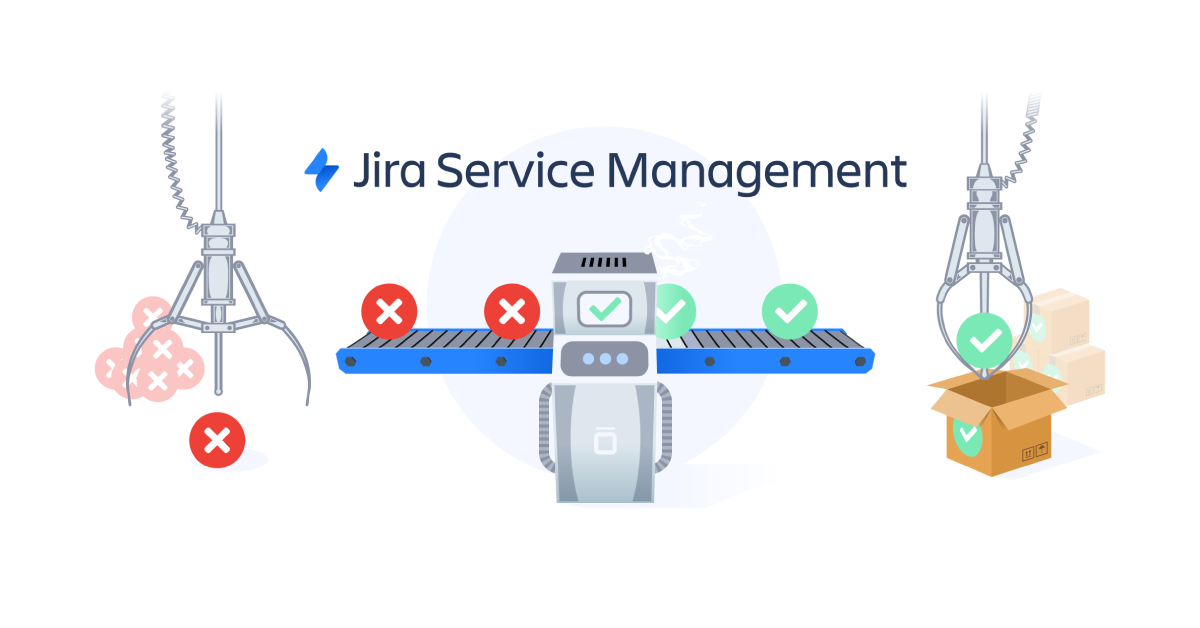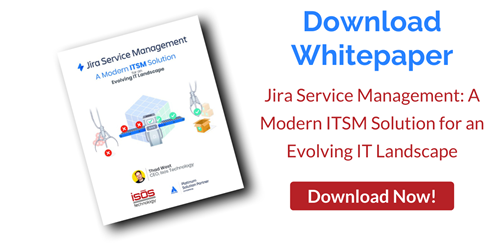 ServiceNow is a powerful service management platform that is a tremendous fit for the right enterprises. However, if you’re like many organizations that originally adopted ServiceNow, you may find today that you’re paying for more than what you need (or increases in license fees are making it harder to find it’s full value). Enter Atlassian’s Jira Service Management — a less expensive, more manageable, and robust ITSM platform.
ServiceNow is a powerful service management platform that is a tremendous fit for the right enterprises. However, if you’re like many organizations that originally adopted ServiceNow, you may find today that you’re paying for more than what you need (or increases in license fees are making it harder to find it’s full value). Enter Atlassian’s Jira Service Management — a less expensive, more manageable, and robust ITSM platform.
Like ServiceNow, Jira Service Management (JSM) provides a comprehensive tool to automate, organize, optimize and standardize your workflows. But unlike ServiceNow, JSM has the flexibility to bring development and IT operations teams together on the same platform developers already work in. In fact, because of this explicit benefit, JSM is often integrated with ServiceNow for those already heavily invested in the platform.
Here are four reasons why Atlassian Jira Service Management may be the right platform for you and your organization:
1. Dev & IT Team Collaboration on a Single, Unified Platform
Jira Software is already the number one tool for agile teams, and Jira Service Management is built on the same platform. That means instead of deploying a new system to adopt and learn, deploying Jira Service Management means your developers can keep working within a system they know, while giving IT teams access to the same simple, yet powerful, platform.
Jira Service Management is intuitive to use with a speedy, user-friendly UI, and has practices inspired by Agile and DevOps built right into the product. That includes service management practices like request, incident, problem, change, and configuration management without the need for significant upfront platform development.
2. Faster Time to Go Live and Easier Implementation
Based on the G2Crowd IT Service Management (ITSM) Tools Implementation Index (free registration required to view), ServiceNow takes an average of 5.19 months to go live. Jira Service Management, on the other hand, only takes 1.57 months to go live. Jira also bests other ITSM tools reviewed by G2Crowd, which in total have an average time to go live of 3.19 months.
Jira Service Management earned an implementation score of 83% in the G2Crowd Index, compared to 72% for ServiceNow. Jira's implementation score also bests the average score of all tools in the index of 75%. Finally, the Index calculates an overall score for each ITSM tool based on ease of setup, implementation time, user adoption and other factors. ServiceNow has an overall score of 7.23 compared to Jira Service Management’s 8.34.
3. Simplified Adaptability
Traditional service management tools are rigid and overly centralized, forcing an inflexible, one-size-fits-all approach. Jira Service Management is adaptable, so each team can tune the product to their unique needs and pivot easily when priorities change. That includes integrations across the Atlassian portfolio, and over 5,000 third party tools in the Atlassian Marketplace.
Also, Jira Service Management’s modern approach to Information Technology Infrastructure Libraries allows you to set up the service management practices that will support your team, without the bloat of features you don’t need and won’t use—saving you time and money.
4. Transparent, Competitive Pricing and High ROI
Avoid the hassle of difficult negotiations and months-long renewals. Jira Service Management offers a transparent pricing model, so you always know what to expect. The Jira Service Management license fee costs $20 per agent, per month, with a Cloud subscription. ServiceNow’s license costs $100 per agent, per month.
Forrester Consulting delivered a report on the Total Economic Impact™ of Atlassian Cloud for ITSM, interviewing five existing enterprise customers operating in application performance management, consumer electronics, education, public sector, and travel. The firm then undertook a financial analysis of those customers’ transition from a traditional ITSM tool or combination of various interaction channels (email, phone, walk-up help desk) to Jira Service Management to manage their service requests.
Forrester found that organizations that deployed Jira Service Management experienced benefits of more than $4 million over three years, achieving a return on investment (ROI) of 246%. Included in those benefits were a 61 percent increase in service agent productivity and more than $800,000 in savings from retiring legacy ITSM tools.
Sign up to receive more great content
Learn more about Atlassian and how Isos can help by signing up to receive our latest blogs, eBooks, whitepapers and more.













